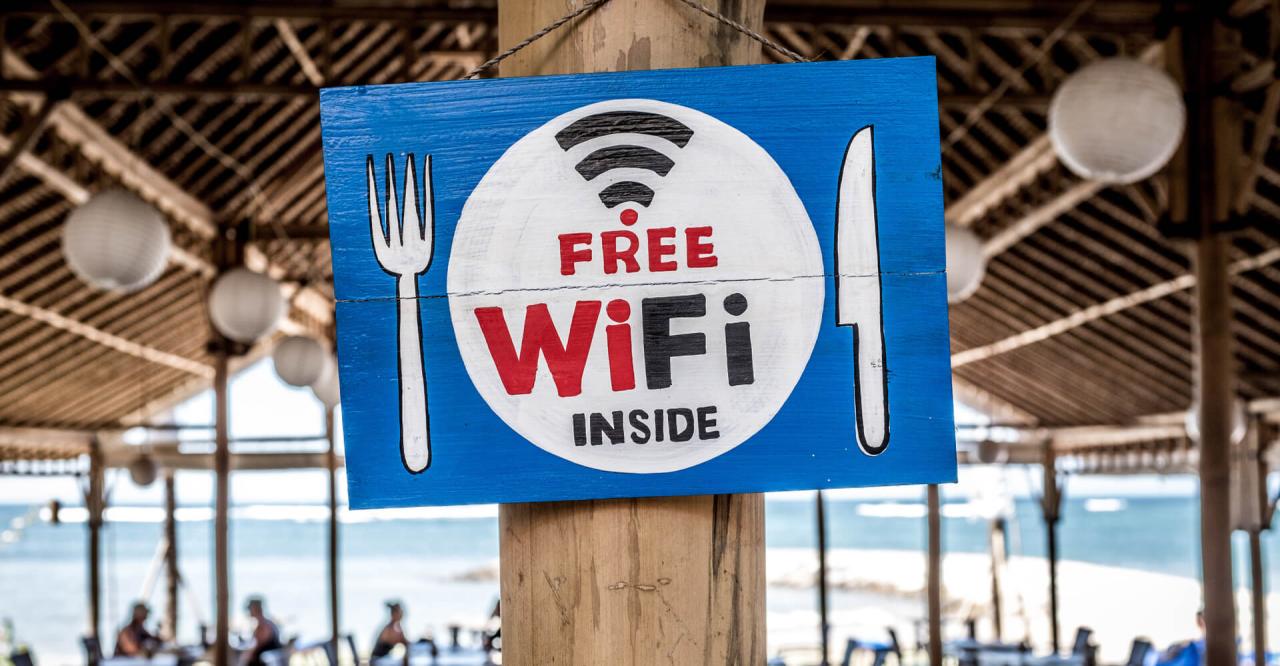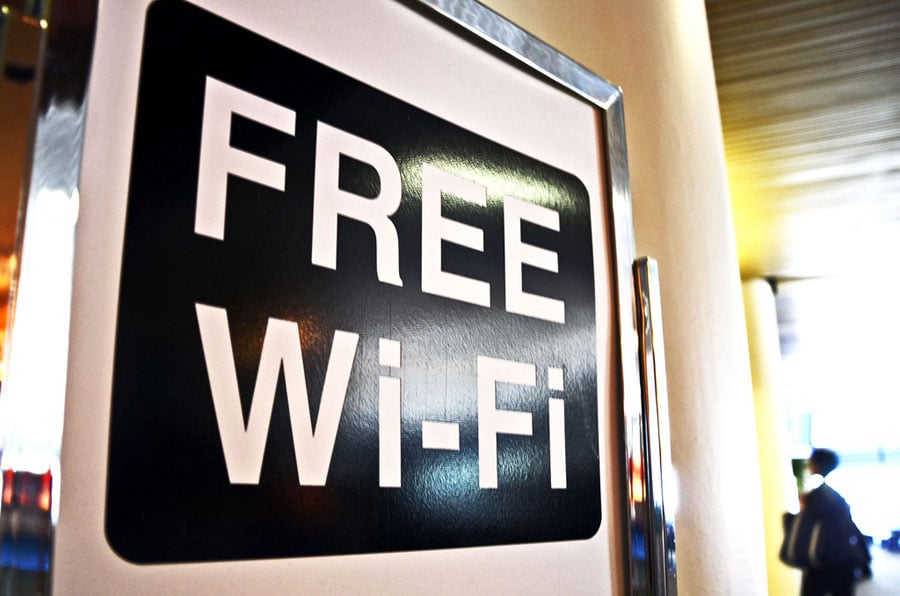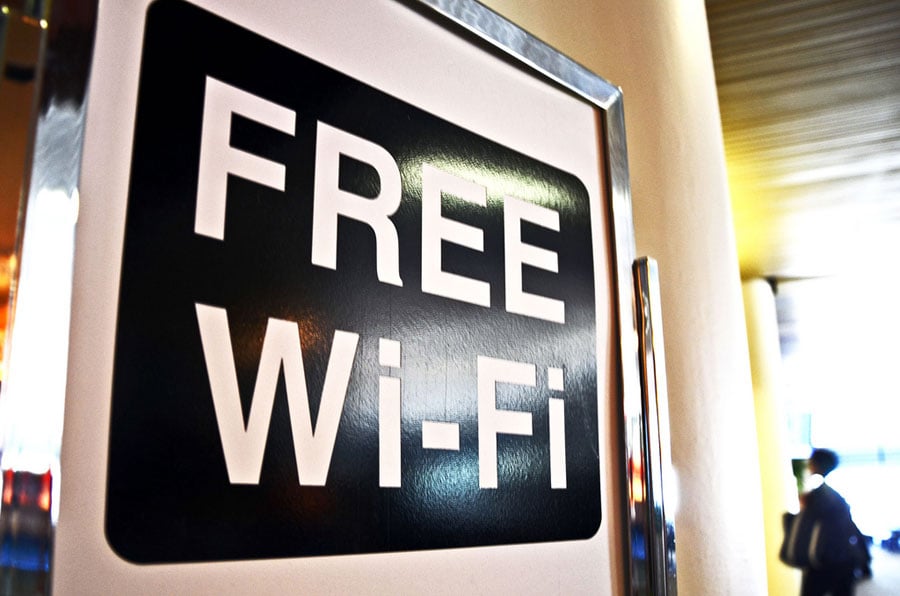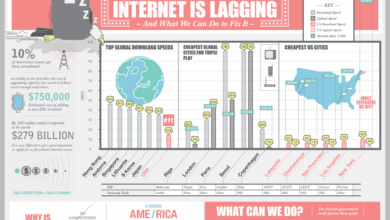WiFi to Free or Not to Free?
WiFi to free or not to free? This question sparks debate across communities, businesses, and individuals. From the early days of exclusive access to the increasingly common free hotspots, the landscape of Wi-Fi has dramatically changed. Different models exist, from public hotspots to paid networks, each with its own set of advantages and disadvantages. What factors influence the decision to offer free Wi-Fi?
Cost, marketing strategies, and community engagement all play a part. And the technical side isn’t to be overlooked. Bandwidth requirements, security protocols, and network congestion management are all crucial to consider. This exploration dives deep into the complexities of providing free Wi-Fi.
The debate extends beyond simple access. Economic implications, social impacts, and crucial technical considerations are all interwoven. Is it financially viable to offer free Wi-Fi, or does it impact revenue generation? How does free Wi-Fi bridge the digital divide and foster community engagement? Security and privacy concerns are paramount, and user experience is equally critical.
A seamless user interface and accessibility features are key to success. Finally, successful case studies offer valuable insights, and emerging trends like 5G and remote work will continue to shape the future of free Wi-Fi access.
Introduction to Wi-Fi Free Access

Wi-Fi, once a privilege enjoyed by a select few, has become a ubiquitous feature in modern life. Its evolution from exclusive corporate networks to public hotspots and now increasingly shared spaces reflects a growing need for convenient, accessible internet connectivity. This transformation necessitates an understanding of the various models of access, the factors driving their adoption, and the technical considerations that underpin their successful implementation.The transition from a limited, often paid service to a broader spectrum of free and paid options has shaped the way we interact with technology and access information.
This evolution has had a profound impact on personal and professional communication, educational opportunities, and economic development in various regions and communities.
Models of Wi-Fi Access
Different models of Wi-Fi access cater to various needs and environments. Public hotspots, often found in coffee shops, airports, and libraries, offer temporary, usually free access to the internet. Free Wi-Fi networks, frequently deployed by businesses and municipalities, provide extended access within a specific area. Paid Wi-Fi networks, conversely, are commonly found in hotels or dedicated spaces, charging users for their service.
These models differ significantly in their accessibility, duration of use, and pricing structure.
- Public Hotspots: These networks are often found in public places and are designed for short-term use. They typically offer limited bandwidth and may have restrictions on usage duration or data volume. Examples include Wi-Fi at airports, cafes, or libraries.
- Free Networks: These networks, usually deployed by businesses or community organizations, aim to provide broader, potentially more sustained access. Factors like bandwidth and security are crucial considerations in their implementation. Examples include free Wi-Fi in local parks or shopping malls.
- Paid Networks: Paid networks offer dedicated and often high-bandwidth access, often found in hotels, paid entertainment venues, or areas with substantial data usage needs. Pricing structures typically depend on the duration of access and the bandwidth offered. Examples include paid Wi-Fi in hotels or event spaces.
Factors Influencing Free Wi-Fi Provision
The decision to offer free Wi-Fi is influenced by a variety of factors, ranging from cost considerations to community engagement and marketing strategies. The benefits of increased foot traffic and improved community perception play a significant role in this decision-making process.
- Cost Considerations: Providing free Wi-Fi entails significant infrastructure and maintenance costs. Bandwidth requirements, security protocols, and ongoing support contribute to these expenditures. The financial viability of such an initiative depends heavily on factors like expected usage and the potential for revenue generation from other sources.
- Marketing and Branding: Free Wi-Fi can serve as a strong marketing tool for businesses. It can attract customers, boost brand visibility, and improve the overall customer experience. This marketing aspect frequently outweighs initial investment costs, as increased customer engagement and repeat visits are realized.
- Community Engagement: Free Wi-Fi can be a catalyst for community engagement, fostering a more connected and accessible environment. It can enable educational opportunities, facilitate communication, and bridge the digital divide within communities. This community benefit can often justify the financial investment.
Technical Considerations for Free Wi-Fi
Providing free Wi-Fi involves careful consideration of technical aspects, including bandwidth requirements, security protocols, and network management. Ensuring a smooth and reliable experience for users is paramount.
- Bandwidth Requirements: The bandwidth required to support free Wi-Fi access depends on the anticipated usage volume. High-traffic areas, such as public spaces with many concurrent users, require significantly more bandwidth than smaller, less-used environments. Estimating the expected user load is essential for proper infrastructure design.
- Security Protocols: Security is critical to prevent unauthorized access and data breaches. Robust security protocols, including encryption and authentication measures, are essential. This safeguards user data and maintains the integrity of the network.
- Network Management: Efficient network management is vital for ensuring optimal performance and stability. Tools for monitoring and troubleshooting network issues are essential to minimize disruptions and downtime. Effective network management strategies are critical for the longevity and effectiveness of the free Wi-Fi service.
Economic Implications of Free Wi-Fi
Free Wi-Fi access, while seemingly beneficial, presents a complex interplay of economic factors. The initial allure of universal connectivity often overshadows the nuanced financial considerations involved in implementation and long-term sustainability. Understanding these implications is crucial for policymakers, businesses, and communities considering the introduction of free Wi-Fi networks.Offering free Wi-Fi can have a profound impact on local economies.
Increased foot traffic, greater online engagement, and a boost in e-commerce activity are potential positive outcomes. However, the associated costs and the need for alternative revenue streams must be carefully evaluated.
Potential Financial Impacts
The provision of free Wi-Fi, while offering benefits, comes with considerable financial obligations. These range from the initial infrastructure setup to ongoing maintenance and security costs. The operational expenditure, especially for large-scale networks, can be substantial. Furthermore, the potential for increased demand may strain existing network capacity, necessitating upgrades and expansions.
Costs Associated with Free Wi-Fi
Providing free Wi-Fi involves a range of expenses. The upfront costs include the purchase of equipment like routers, access points, and cabling. Recurring costs encompass network management, maintenance, security updates, and potential upgrades to accommodate increasing user traffic. For example, a municipal Wi-Fi network in a densely populated area may need to invest heavily in expanding its network infrastructure to meet demand.
Costs Compared to Paid Access
The financial model of paid access typically involves subscription fees. While upfront costs for infrastructure may be similar, the recurring revenue stream from subscriptions allows for a predictable and potentially more sustainable funding model. In contrast, free Wi-Fi requires alternative revenue streams to cover operating expenses. For example, a coffee shop offering free Wi-Fi may rely on increased customer spending or advertising partnerships to offset the cost.
Revenue Generation through Alternative Means
Free Wi-Fi presents opportunities for revenue generation through innovative partnerships and strategic alliances. Advertising revenue, though potentially limited compared to subscriptions, can contribute significantly to operational costs. Strategic partnerships with local businesses, such as cafes or restaurants, can create mutually beneficial arrangements. For instance, a local business could offer discounts to customers who use the free Wi-Fi network, creating a win-win scenario.
Economic Viability of Business Models
The economic viability of free Wi-Fi depends on several factors. A comprehensive assessment needs to consider the size of the target market, the level of user engagement, and the effectiveness of alternative revenue streams. Cities and businesses must evaluate the potential return on investment and carefully analyze their long-term sustainability plans. A successful business model incorporating free Wi-Fi should ensure a balanced approach to both costs and potential benefits.
For example, a free Wi-Fi network at a university campus could potentially increase student engagement and academic output, thereby justifying the investment.
Social and Community Impacts
Free Wi-Fi access is more than just a convenience; it’s a powerful tool for social and economic advancement. It can bridge the digital divide, fostering greater community engagement and enabling local businesses to thrive. While the benefits are significant, potential issues related to security and privacy must also be carefully considered.
Bridging the Digital Divide
Free Wi-Fi initiatives play a crucial role in addressing the digital divide, especially in underserved communities. Access to the internet empowers individuals with essential tools for education, job searching, and communication. This accessibility can significantly improve their quality of life and open doors to opportunities previously unavailable. For example, in rural areas with limited internet infrastructure, free Wi-Fi hotspots can provide vital connectivity for students pursuing online courses or job seekers researching remote work opportunities.
This democratization of internet access can lead to a more equitable distribution of knowledge and resources.
Community Engagement and Interaction
Free Wi-Fi hotspots often become community hubs, fostering social interaction and collaboration. People can connect with each other, share information, and participate in online discussions, leading to stronger community bonds. Public spaces equipped with free Wi-Fi can encourage social gatherings, facilitating networking events, workshops, and educational programs. This increased interaction can be particularly beneficial in promoting a sense of belonging and shared identity within the community.
Supporting Local Businesses
Free Wi-Fi can significantly boost local businesses by attracting customers and increasing foot traffic. A business with free Wi-Fi signals reliability and modern accessibility, making it more attractive to customers who are increasingly reliant on internet access. Customers can complete tasks, research products, or connect with others, all while enjoying the business’s offerings. This convenience can lead to increased sales and profitability for local businesses, fostering a vibrant and active community ecosystem.
Security and Privacy Concerns
While free Wi-Fi offers numerous benefits, security and privacy concerns are important considerations. Unsecured networks can be vulnerable to hacking, potentially exposing sensitive information. Moreover, the use of public Wi-Fi often requires users to trust the network’s administrator with their personal data. Robust security measures and clear privacy policies are essential to mitigate these risks and build trust in the network.
For instance, implementing strong encryption protocols and regularly updating security software are critical steps in safeguarding user information. Furthermore, transparent communication about data collection practices is essential to maintain user trust and confidence.
Technical Considerations and Security: Wifi To Free Or Not To Free

Free Wi-Fi access, while offering numerous benefits, presents significant technical and security challenges. Careful planning and implementation are crucial to ensure a reliable, secure, and user-friendly experience. Addressing these concerns directly impacts the success and longevity of any free Wi-Fi initiative.Implementing free Wi-Fi requires a robust technical infrastructure, encompassing network design, security protocols, and user management systems. This includes considering factors such as bandwidth capacity, device compatibility, and potential congestion issues.
A comprehensive security strategy is essential to protect user data and prevent unauthorized access.
Wi-Fi Security Protocols Comparison
Understanding the strengths and weaknesses of various security protocols is paramount. This allows for informed choices in selecting the appropriate protocol for the free Wi-Fi network.
| Protocol | Security Features | Weaknesses | Suitability for Free Wi-Fi |
|---|---|---|---|
| WPA2 | Offers encryption, authentication, and access control. | Vulnerable to certain attacks, particularly KRACK. | Suitable for initial deployment, but not recommended for high-security applications. |
| WPA3 | Improved security features compared to WPA2, including enhanced encryption, protection against brute-force attacks, and more robust personal and enterprise-grade configurations. | Relatively new, so long-term vulnerabilities may not be fully understood. | The preferred choice for free Wi-Fi due to its stronger security measures. |
Technical Infrastructure for Free Wi-Fi, Wifi to free or not to free
The technical infrastructure needed for free Wi-Fi hinges on several key components. A high-capacity router is essential for handling the expected number of users.
The debate about making Wi-Fi free is heating up, and it’s not just about access. Recent news about VeriSign claiming their SiteFinder technology doesn’t destabilize the internet ( verisign claims sitefinder does not undermine stability of net ) has me thinking about the potential impacts on a completely free Wi-Fi system. Ultimately, making Wi-Fi universally free is a complex issue with both exciting possibilities and potential challenges that need careful consideration.
- Router Selection: Selecting a high-throughput router is vital to handle the simultaneous connections of multiple users. The router’s specifications, such as bandwidth and processing power, directly impact the network’s overall performance.
- Network Coverage: Ensuring adequate coverage across the service area is crucial. This often involves strategically placing access points and optimizing signal strength.
- Bandwidth Management: Free Wi-Fi networks are susceptible to congestion. Employing sophisticated bandwidth management systems is essential to provide a stable experience to all users. This may involve implementing traffic shaping, queuing, and prioritizing access for critical applications.
Security and Privacy Measures
Ensuring user privacy and security on free Wi-Fi networks is paramount. Implementing robust security measures is crucial to build user trust.
- Strong Encryption: Implementing WPA3 encryption is essential for safeguarding data transmitted over the network. This will help protect user data from unauthorized interception. Strong passwords and frequent updates are critical for maintaining security.
- Access Control: Implementing mechanisms to verify user identity and restrict access to unauthorized individuals is important. This can include using a guest network or a system of user authentication and authorization.
- Network Segmentation: Separating different user groups (e.g., students, visitors, staff) through network segmentation can improve security and control access to sensitive resources.
Congestion Management and Performance Optimization
Effective congestion management is vital for a smooth and efficient free Wi-Fi experience.
- Traffic Shaping: Prioritizing traffic types (e.g., voice over IP, video streaming) can help ensure optimal performance for critical applications, preventing bottlenecks and maintaining a stable connection for all users.
- Load Balancing: Distributing user traffic across multiple access points helps avoid overloading any single point, maintaining stable performance during peak usage times.
- Network Monitoring: Implementing tools to monitor network performance in real-time is essential. This allows for proactive identification and resolution of potential issues, maintaining the overall quality of service.
User Experience and Accessibility
Free Wi-Fi networks are only as valuable as their ease of use. A seamless user experience, particularly for those with disabilities, is crucial for widespread adoption and positive community impact. This section dives into the design considerations and accessibility features needed to create a truly beneficial service.
User Interface Design for Access
Effective user interfaces are key to encouraging Wi-Fi usage. Different methods can simplify the connection process. A simple login, for instance, requires minimal user interaction. Interactive maps, on the other hand, can guide users to nearby hotspots.
| Interface Design | Description | Pros | Cons |
|---|---|---|---|
| Simple Login | A straightforward username and password entry, often with a pre-filled network name. | Fast, easy to implement, requires minimal user skill. | May not be suitable for all users, especially those unfamiliar with login systems. |
| Interactive Maps | A map displaying available Wi-Fi hotspots with details such as signal strength, connection speed, and user reviews. | Visually appealing, helps users locate suitable hotspots, can provide useful data. | Requires complex development and maintenance, relies on accurate and up-to-date data, potentially overwhelming for some users. |
| QR Codes | Hotspots can be accessed by scanning a QR code, which can be displayed on a physical sign or digital platform. | Simple and quick for users who have QR code readers, eliminates the need for manual entry. | Requires users to have QR code scanning applications, potentially less user-friendly for those without smartphones. |
Accessibility Considerations
Ensuring free Wi-Fi is usable for all community members is paramount. Accessibility considerations must include people with visual, auditory, motor, and cognitive impairments. This requires thoughtful design choices.
- Visual Impairments: Using screen readers, alternative text for images, and clear, large font sizes are essential. Ensure all critical information is presented in accessible formats, such as audio or braille.
- Auditory Impairments: Provide visual cues instead of relying solely on audio signals. Use clear captions or transcripts for any spoken instructions. Consider alternative ways to signal successful connection or error messages.
- Motor Impairments: Design interfaces with large clickable areas and intuitive navigation. Using voice commands or alternative input methods should be an option for users with limited mobility.
- Cognitive Impairments: Simplify the language used, and provide clear, concise instructions. Use icons and visuals to aid understanding. Break down complex tasks into smaller, manageable steps.
Creating a Positive User Experience
A positive user experience (UX) is key to successful Wi-Fi adoption. This involves creating a sense of trust and reliability.
- Clear Instructions: Simple and clear instructions on how to connect to the network should be readily available.
- Fast Connection Times: Fast and reliable connections are critical for a positive user experience. Regular maintenance and monitoring of the network is essential.
- Prompt Customer Support: A responsive support system can help resolve issues and enhance user satisfaction. Offer multiple channels for support, such as online help forums or email.
- Feedback Mechanisms: Allow users to provide feedback on the service. Collect data on issues and use this to improve the network.
Improving User Engagement
Attracting and retaining users is crucial for the success of free Wi-Fi. Offering incentives and engagement opportunities can boost usage.
- Incentives: Offering limited-time discounts or special promotions can attract users. This could be discounts at local businesses or access to specific apps.
- Community Features: Integrate the Wi-Fi with local community events and activities. Encourage user interaction and sharing of resources through the network.
- Gamification: Introduce game-like elements to encourage usage, such as points systems or leaderboards for data usage or time spent connected.
- Partnerships: Partner with local businesses to offer exclusive content or services through the Wi-Fi network, like access to online resources or digital learning platforms.
Case Studies of Successful Free Wi-Fi Implementations
Free Wi-Fi is no longer a futuristic concept; it’s becoming a tangible reality in many communities worldwide. These initiatives, when successful, can foster economic growth, enhance social interaction, and bridge the digital divide. Examining successful deployments provides valuable insights into the factors that contribute to positive outcomes and the lessons learned from these implementations.These case studies reveal how free Wi-Fi can go beyond simply providing internet access; it can be a catalyst for positive change in a community, acting as a springboard for entrepreneurship and improved quality of life.
The success of these deployments often stems from careful planning, community engagement, and a focus on the specific needs of the area.
Successful Free Wi-Fi Implementations: Examples and Analysis
Examining successful deployments allows for a deeper understanding of how free Wi-Fi can positively impact communities. Several factors, when combined, can lead to significant improvements.
So, free Wi-Fi? A tempting prospect, but the reality is often frustratingly slow. It’s all about the underlying infrastructure, like the bottlenecks in the computer’s front-side bus, which directly impacts the speed of data transfer. This article dives deep into breaking the speed barrier the frontside bus bottleneck , revealing how these limitations can affect everything from web browsing to streaming video.
Ultimately, free Wi-Fi’s value hinges on actual speed, not just the promise of free access.
- The “Connected City” Project in Amsterdam: This initiative aimed to create a citywide network that provided free high-speed Wi-Fi access in public spaces. A key factor in its success was the extensive community engagement process. Residents were actively involved in planning the network’s layout, identifying areas with the highest need, and providing feedback on the user experience. This participatory approach fostered trust and ownership of the project within the community.
The project resulted in increased digital literacy, improved business opportunities for local entrepreneurs, and a more vibrant public space. Businesses saw increased foot traffic and online engagement, and residents were able to access online resources and services more readily. The city’s tourism industry also benefitted, attracting tech-savvy visitors who appreciated the reliable and accessible Wi-Fi.
- The “Digital Hub” Program in a Rural County: This initiative focused on providing free Wi-Fi access in rural communities, bridging the digital divide and improving access to online resources for residents. The success of this program relied on strategic partnerships with local schools and libraries. These institutions provided training and educational resources to residents, helping them develop digital literacy skills. The program also fostered collaboration between the local government, community organizations, and businesses, showcasing a strong sense of community ownership and a concerted effort.
This resulted in a surge in online learning opportunities, enabling remote work options for residents and improving access to educational resources for students. The initiative created an ecosystem where residents could access online services, boosting local businesses and creating a more inclusive digital environment.
- The “Wi-Fi for Entrepreneurs” Initiative in a Developing City: This program aimed to provide free Wi-Fi access to entrepreneurs in a developing city, recognizing the importance of digital connectivity for economic growth. A crucial aspect of its success was the integration of business training programs with the Wi-Fi infrastructure. These programs provided mentorship and resources to entrepreneurs, enabling them to leverage the internet for their businesses.
The program fostered collaboration with local incubators and venture capital firms, creating a supportive ecosystem for entrepreneurial endeavors. This initiative resulted in the creation of new businesses, increased job opportunities, and a notable boost to the local economy. The project also saw the emergence of innovative solutions to local problems, highlighting the potential of free Wi-Fi to foster local entrepreneurship.
The debate around free Wi-Fi is heating up, but it’s not just about access. Recent actions by the European Union against Microsoft for alleged abuses in the tech market, like those detailed in this article , highlight the complex interplay between tech giants and the public good. Ultimately, whether Wi-Fi is free or not is a nuanced question, not just about cost but also fair competition and consumer protection.
Factors Contributing to Success
Successful free Wi-Fi implementations share several key characteristics.
- Community Engagement: Active involvement of residents in the planning and implementation process fosters ownership and ensures the network addresses the specific needs of the community. This approach builds trust and increases the likelihood of long-term success.
- Strategic Partnerships: Collaboration with local organizations, businesses, and educational institutions can leverage existing resources and expertise, maximizing the impact of the Wi-Fi network. Partnerships also help ensure sustainability.
- Robust Infrastructure: A reliable and high-speed network is essential for user satisfaction and maximizing the benefits of free Wi-Fi. Investing in a well-designed infrastructure, capable of handling increased demand, is critical.
- Clear Goals and Metrics: Defining specific goals and tracking key performance indicators (KPIs) enables evaluation of the program’s effectiveness and allows adjustments as needed. This ensures the project remains focused on its intended objectives.
Lessons Learned
The case studies highlight several key lessons for future free Wi-Fi deployments.
- Community Ownership is Crucial: Involving the community in every stage of the project is vital for building support and ensuring long-term sustainability.
- Partnerships Drive Success: Collaboration with local organizations is key to maximizing the network’s impact and reaching a wider audience.
- Focus on Specific Needs: Tailoring the network to address the specific needs and priorities of the community is essential for achieving maximum positive impact.
Future Trends and Predictions
The landscape of Wi-Fi access is rapidly evolving, driven by technological advancements and changing societal needs. Future trends will significantly impact the role and importance of free Wi-Fi, creating new opportunities and challenges for providers, users, and communities alike. Understanding these developments is crucial for effectively navigating the evolving digital landscape.The convergence of emerging technologies, like 5G and 6G, with evolving user demands, such as remote work and education, will reshape the future of Wi-Fi access.
This necessitates a proactive approach to anticipate and adapt to these transformations.
Potential Developments in Wi-Fi Technologies
Advancements in wireless communication technologies are transforming the way we connect. The transition from 4G to 5G, and the forthcoming 6G, promises faster speeds, lower latency, and increased capacity. This increased bandwidth and reliability will impact the design and implementation of free Wi-Fi networks, potentially enabling more advanced applications and services. For instance, the increased bandwidth of 5G networks allows for seamless streaming and high-definition video conferencing, improving the user experience of online education and remote work.
Emerging Trends in Wi-Fi Use Cases
The increasing reliance on digital platforms for education and employment is significantly impacting the need for reliable and accessible Wi-Fi. Remote work is becoming increasingly common, and online education platforms are expanding. These trends demand robust and consistent Wi-Fi access to ensure productivity and educational outcomes. Free Wi-Fi hotspots become critical infrastructure in supporting these trends.
Influence of Future Trends on Free Wi-Fi
The integration of 5G and 6G technologies, along with the growth of remote work and education, will likely drive the need for more widespread and robust free Wi-Fi networks. Communities with limited access to reliable internet infrastructure will benefit most from the provision of free Wi-Fi. Furthermore, free Wi-Fi networks can be strategically placed to support and bolster local businesses and entrepreneurship.
Impact on Stakeholders
The future of free Wi-Fi will affect various stakeholders, including:
- Internet Service Providers (ISPs): ISPs may need to adapt their infrastructure and business models to accommodate the increasing demand for free Wi-Fi access. They could potentially collaborate with community organizations to deploy free Wi-Fi networks.
- Community Organizations: Community organizations will play a crucial role in providing and maintaining free Wi-Fi access points. They can act as a bridge between local residents and the digital world.
- Government Agencies: Governments may need to invest in and regulate free Wi-Fi networks to ensure equitable access and address security concerns.
- Businesses: Businesses that support remote work or provide online services may see an increased need for reliable Wi-Fi access in their facilities and in surrounding areas.
These trends highlight the importance of strategic planning and proactive implementation of free Wi-Fi networks to meet the changing needs of society. A proactive approach is vital to harness the opportunities that emerge and address the potential challenges.
End of Discussion
In conclusion, the decision to offer free Wi-Fi is a multifaceted one. While the potential benefits, such as bridging the digital divide and fostering community engagement, are undeniable, the financial, social, and technical considerations must be carefully weighed. Ultimately, the success of a free Wi-Fi initiative hinges on a thoughtful approach that addresses cost, security, user experience, and the specific needs of the community.
The future of free Wi-Fi is dynamic and full of possibilities, as technology advances and societal needs evolve. What will the next chapter bring? Let’s continue to explore this fascinating topic.






